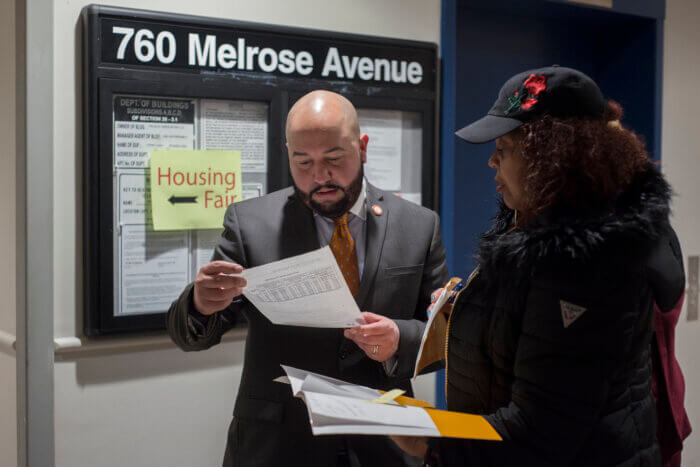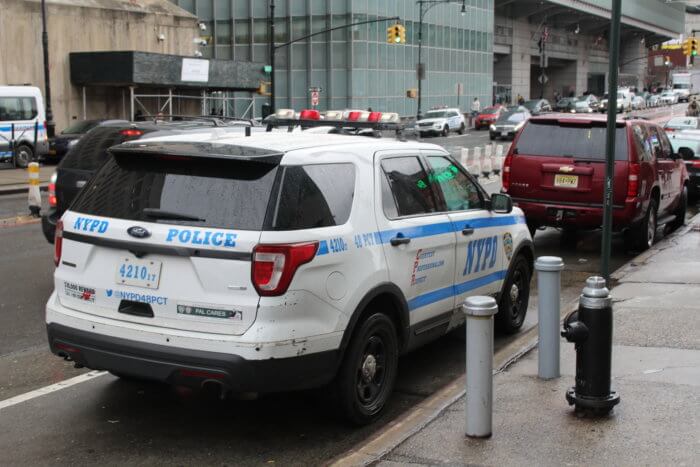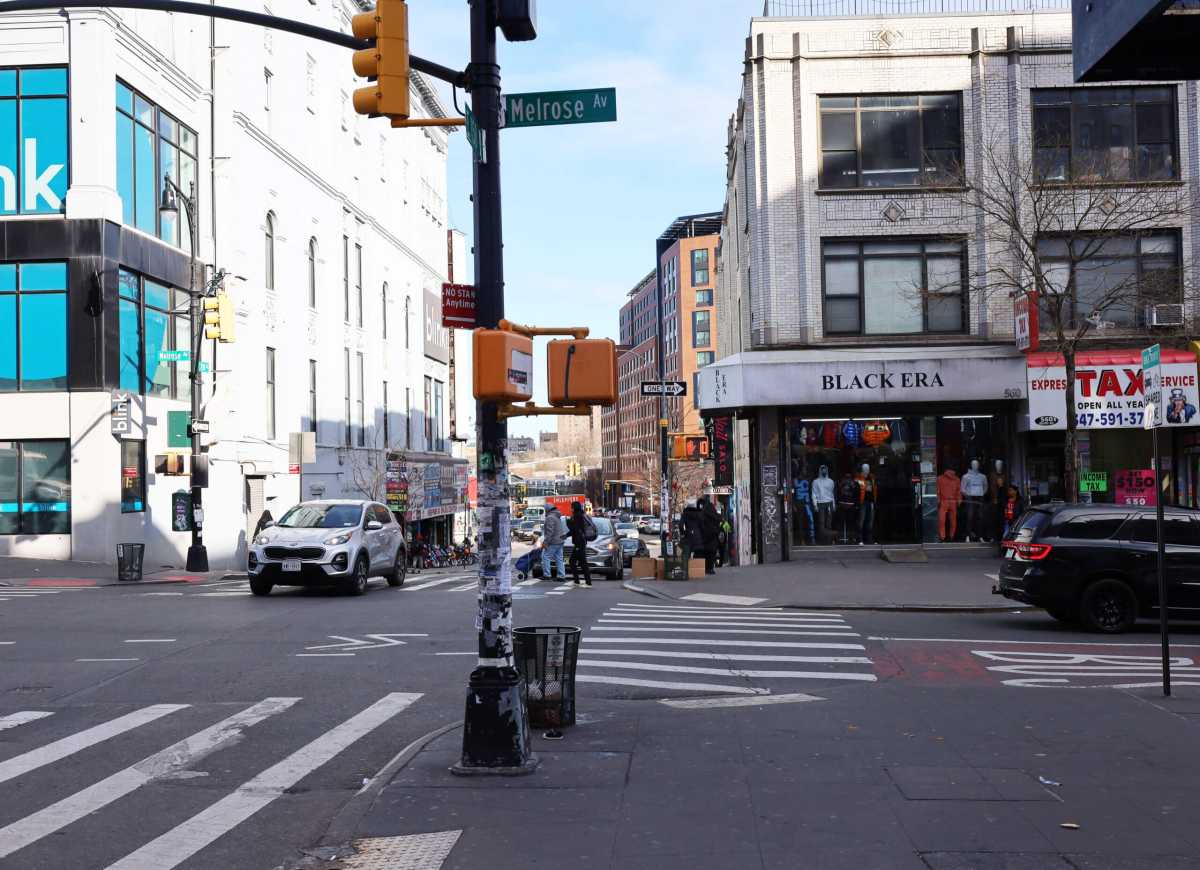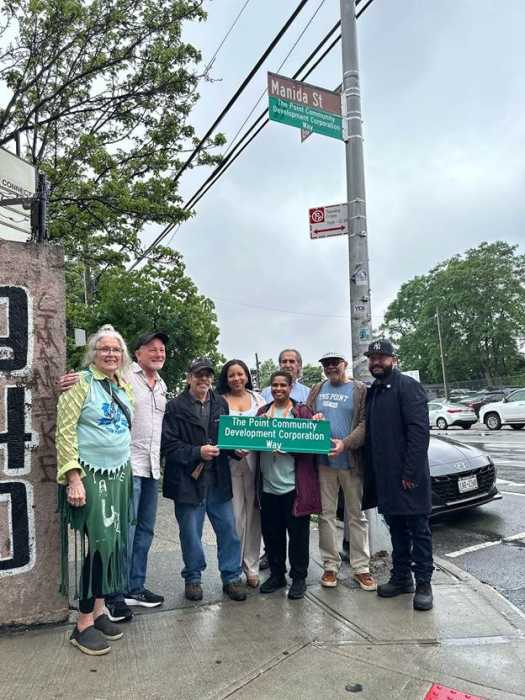In early February, Bronx City Councilmember Rafael Salamanca Jr. challenged the city’s “far-left” Democrats — many who seek to scale back the NYPD’s funding capacity — to talk to his constituents about how defunding the police ensures their safety.
Salamanca, 42, implied that his constituents, who reside within the 17th City Council District and 41st Precinct in the South Bronx, would likely be opposed to any measure that would reduce the capacity and scope of police in those neighborhoods.
A few weeks after his challenge to progressives went unanswered, the Bronx Times decided to take up the task and ventured into portions of Salamanca’s district to speak with residents of Hunts Point, Longwood and Melrose. In the end, there didn’t seem to be a consensus — some agreed with Salamanca, while others didn’t.
The 41st Precinct primarily serves Hunts Point and Longwood, including its main shopping district, which is located on Southern Boulevard from Westchester Avenue to East 163rd Street.
The most recent NYPD crime data suggests crime in the precinct area is outpacing 2022 numbers with 278 major crime incidents this year compared to 249 incidents — over the same timeframe — last year.
Resident Domenica Reyes feels her Hunts Point neighborhood is like any other in New York City, there’s good days and bad days, but told the Bronx Times she feels police don’t solve crimes, rather they react and respond to them.
Others like Alvarado Green, a longtime Longwood resident, says crime evolves with the seasons, but feels that the local police are “ill-equipped” to prevent crime or handle the emotions of residents affected by it.
“Sometimes you’ll see them in uniform, other times they’re undercovers, but the interactions are always hostile, always on edge,” said Green. “I don’t think there’s trust both ways here. Most don’t live in the community, or take the time to know us outside perp and victim.”
I challenge far left dems @LincolnRestler & @CMShahanaHanif (representing the wealthiest communities in NYC) to come to Hunts Point/Longwood & address my community on how defunding @NYPDnews @NYPDPBBronx is a positive thing to ensure their safety. #cometothesouthBX
— Rafael Salamanca, Jr. (@CMSalamancaJr) February 9, 2023
In recent years, the 41st Precinct has reported a rise in misdemeanors like petit larceny — stolen property valued at $1,000 or less — and misdemeanor assaults, which are punishable by up to one year in jail. Josefina, a Bronx resident who declined to give her last name, frequents The Hub and said the district needs more police patrol on sidewalks to prevent snatch-and-grabs by passersby in scooters.
For Leonard Compton, his perception of crime in the district is often petty crime, like car break-ins and property damage. Compton, a Longwood resident, says there is a need for public safety but believes that police need better training and methods to deescalate situations that they respond to in the South Bronx, as well as better familiarizing themselves with the area.
The relationship between police and public has strained following recent high-profile killings by cops that have put American law enforcement under intense scrutiny and in the crosshairs of progressive lawmakers, with some having called for the dissolution of policing altogether.

The NYPD has also seen its workforce shrink with its lowest attrition numbers since 2002; 1,400 cops are projected to resign this year before qualifying for retirement, according to a report by the New York Post. In the first two months of 2023, 239 officers have already left the job, compared to 176 last year and just 110 the year before.
Others believe, however, the NYPD’s checkered past with the policing of the city’s Black and Latino residents have caused an irreparable distrust.
Recent racial misconduct lawsuits including the 2020 Black Lives Matter protests in Mott Haven where protestors were “kettled” by officers, are cited by proponents of the “defund the police” movement as evidence of a culture within the NYPD that may not be fixable without massive systemic reform.
Last month the NYPD released year-end statistics on traffic stops, and of the more than 670,000 motorists pulled over in 2022, the vast majority of those arrested and searched were people of color. According to the data, Black and Hispanic drivers made up 55% of stops, but accounted for 86% of arrests and 85% of vehicles searched.
“If you’re white or lighter-skinned, you may think the NYPD are here to help you,” said Rickey Davis, a Hunts Point resident. “I’ve been stopped-and-frisked more times than I count. I’ve been harassed by these men and women who say they serve and protect. I don’t think I can ever fully trust them as a public service.”
The Bronx Times attempted to contact Salamanca on multiple occasions for this article but did not receive a response.
The councilmember, who was first elected to the City Council in 2016 after wining a special election, is also the former district manager of Community Board 2 and the former president of the 41st Precinct Community Council. Salamanca was reelected to the council in 2021 after toying with a run for Bronx borough president, and currently chairs the council’s Land Use Committee. He is again up for reelection this year, facing a primary challenge from Gonzalo Duran.

With the onset of the 2020 public safety reckoning following the death of George Floyd, the defund movement failed to gain meaningful traction with lawmakers — many of whom have expressed support for police reform rather than complete disbandment. Included in that was President Joe Biden, who during his 2022 State of the Union address, said, “We should all agree the answer is not to defund the police. It’s to fund the police … fund them with the resources and training they need to protect our communities.”
Police cleared just 56% of citywide homicide cases in 2022— down from 64% in 2020, according to data from the NYPD and the FBI’s Uniform Crime Reporting Program compiled by Vital City, a policy journal.
The most up-to-date-statistics show a 33% clearance rate for Bronx crimes, overwhelmingly the highest of the Five Boroughs, according to NYPD data. However, the NYPD doesn’t provide the total number of incidents.
New York City ranks third overall in police spending per capita, and the NYPD is the largest municipal police force in the world.
But the NYPD’s roughly $5 billion budget has been a source of contention among city Democrats. Last month, the City Council’s Progressive Caucus shrank by 15 members — with the faction’s pledge to cut the NYPD budget the reason for some of the defections.
Many residents in Salamanca’s district also fall short of backing the idea of defunding the NYPD, but believe cutting other resources and programs – a chief criticism of Mayor Eric Adams’ recent $102.7 billion budget – to maintain high police funding, takes away from preventative programming and educational infrastructure that could change outcomes in an already under resourced Bronx.
Adams is a former NYPD captain.
The poverty rate in Hunts Point/Longwood has hovered around 40% before and during the pandemic, compared to 14% citywide. And some residents are more concerned about a dearth of job and housing opportunities, instead of, whether police are on the streets. The argument that more police leads to more arrest, and thereby, less crime, hasn’t been substantiated or disproven.
“I would like to bring a lot of vocational programs and things to keep people off the streets, to kind of show them a different way,” said Danielle Poole, a Staten Island transplant who used to live in Melrose. Poole, 52, has plans to acquire a decaying building at 840 Gerard Ave., near the Grand Concourse, and turn it into a community center.
Reach Robbie Sequeira at rsequeira@schnepsmedia.com or (718) 260-4599 and reach ET Rodriguez at etrodriguez@gmail.com.
For more coverage, follow us on Twitter, Facebook and Instagram @bronxtimes

























